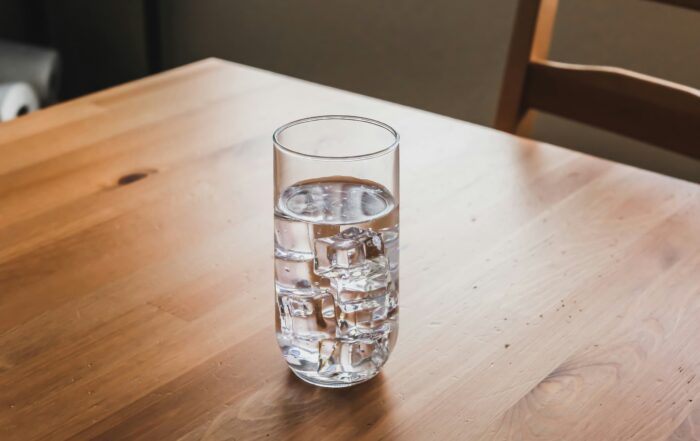Winters along the shorelines of the Great Lakes are best known for biting winds and lake-effect snow. Despite how harsh the weather may seem, there are diamonds in the rough to be found by those who know when and where to look.
Ice formations captivate our sense of wonder, as well as informing us of the subtle seasonal and environmental changes occurring where they are found. While some formations require the entirety of winter to mature, others are fleeting and form spontaneously.
The most alluring freeze patterns tend to occur in remote marine environments because human activity can disrupt their formation. Accessibility is often hindered by the perilous and inhospitable winter landscape, making them even more astounding to witness.
1. Snezhura
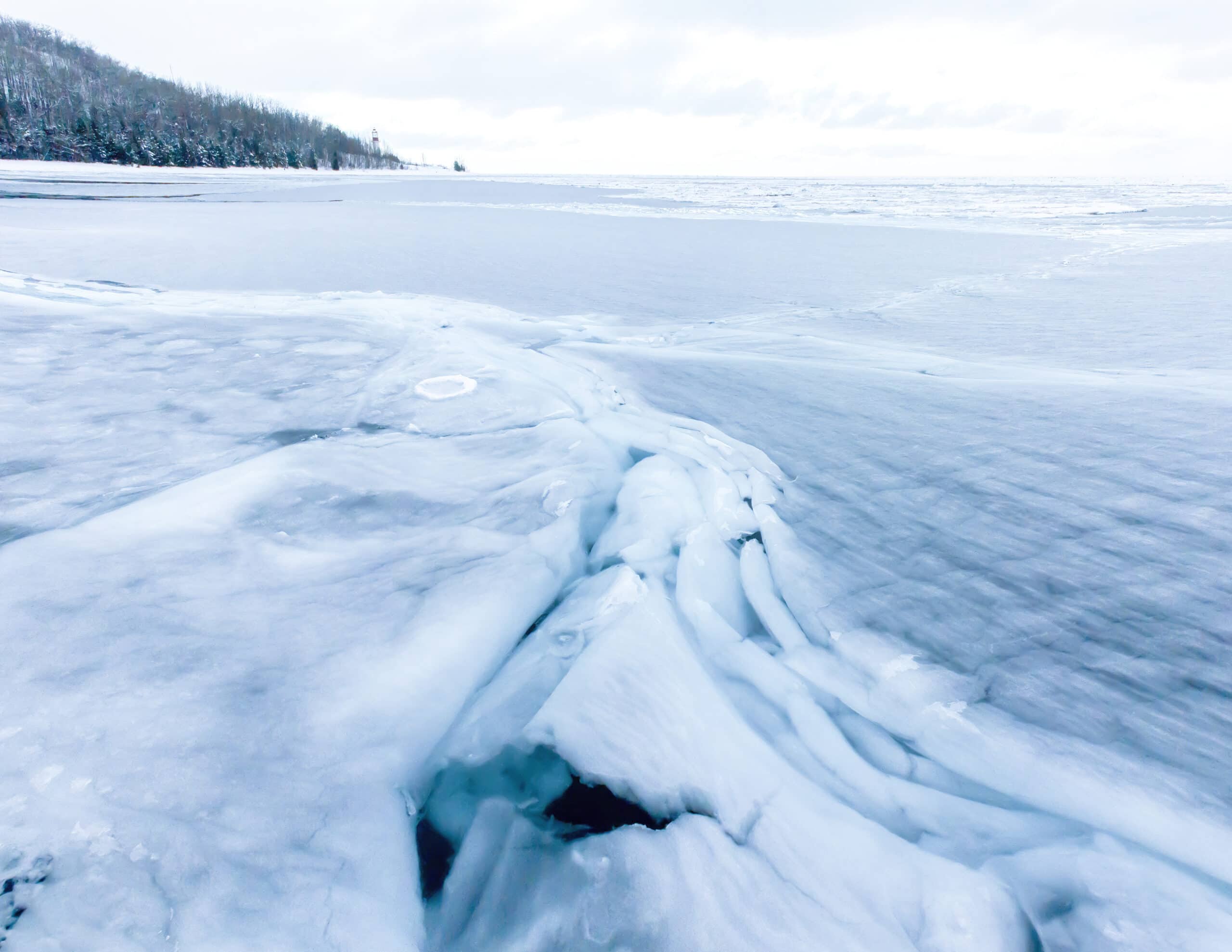
Snezhura ice scrolling by Cape Croker Lighthouse. Neyaashiinigmiing, Georgian Bay.
Snezhura is a rare cloud-like formation that happens when water is on the verge of freezing, but not quite warm enough to melt the falling snow.
Also known as lard ice, snezhura can often appear like sludge or curdled cheese. However, it can also look like ribbons waving in the water or dancing like curtains in a breeze. And although it’s most often white, snezhura can also develop a yellow colour when it mixes with sediments in the water.
The accumulated snow in the water becomes a spongy mass of water-soaked slurp that not only floats but also sinks a little beneath the surface. This buildup of intra-water ice slowly stiffens as the water temperatures continue to drop and eventually becomes a solid drift of ice. Keep an eye on the water as the snow falls during milder temperatures while the water is starting to freeze and you may just happen to spot this unique occurrence waving at you.
2. Trumpet icicles
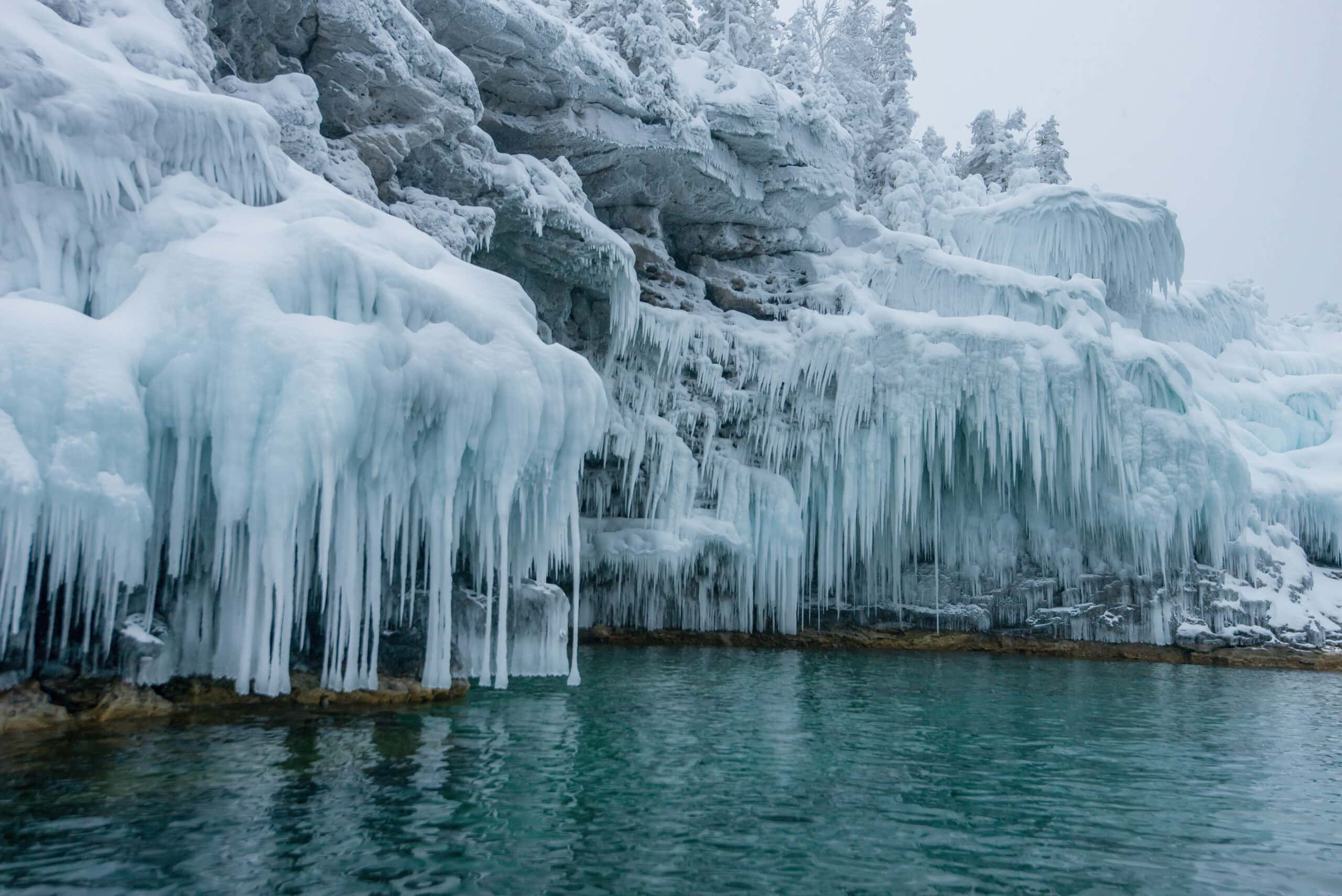
Rare icicle formations at Saugeen/Bruce Peninsula Bruce Peninsula National Park, Lake Huron.
These delicate shapes appear during a period of milder weather that follows a winter gale. The residual ice plastered along coastal cliffs by wave action during a storm gradually lengthens into dangling icicles that nearly touch the water.
Every so often, a gentle wave crests the low-hanging tips of the icicles and waxes them into a bell shape near the bottom. These wintry decorations have only a small window of time before seasonal waves dismantle them.
Spot trumpet icicles when wind and water conditions in the area have been relatively calm over the past few days — long enough for these impressive shapes to form without being shattered.
3. Frost flowers
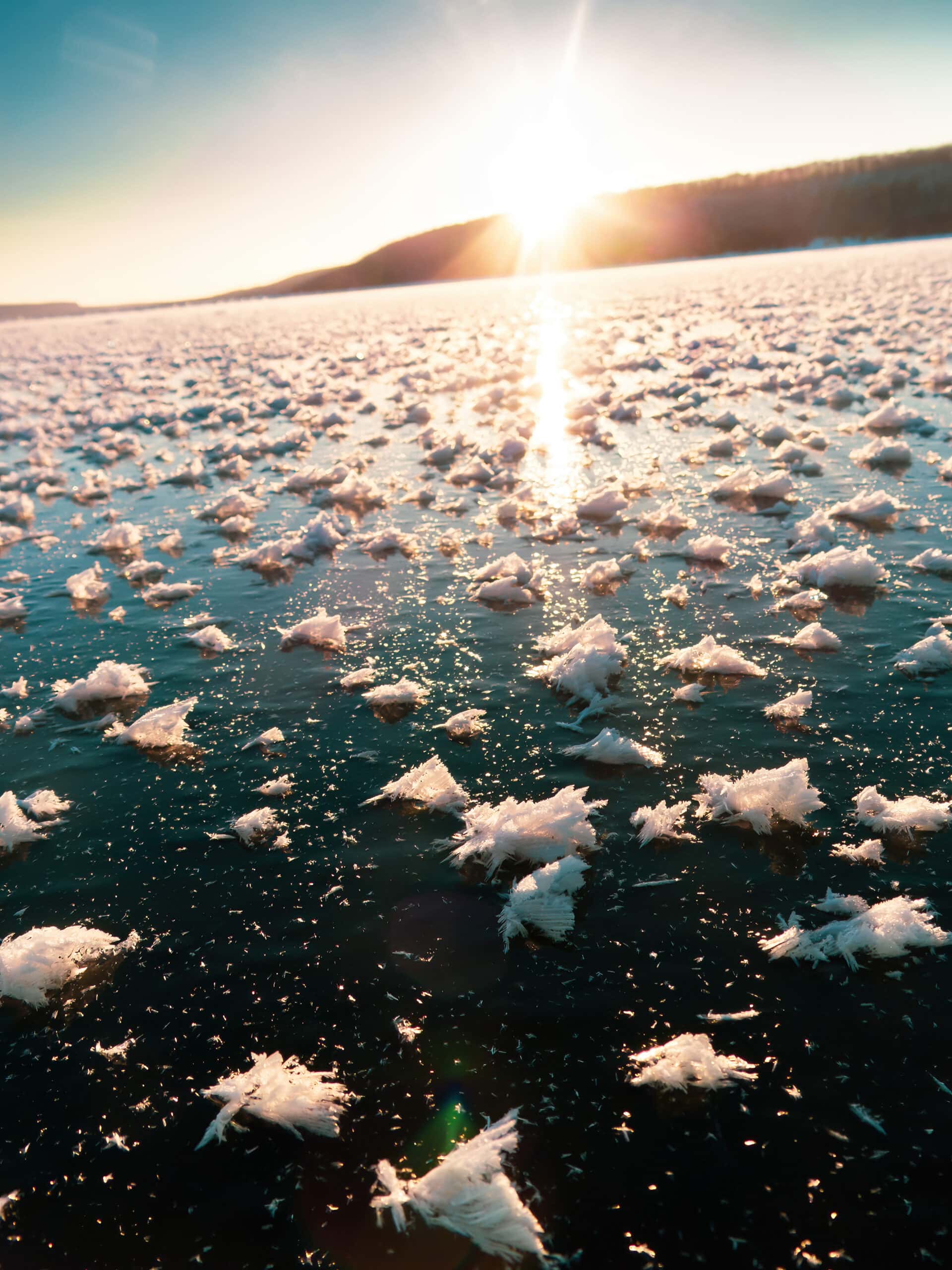
Crystalline frost flowers at Neyaashiinigmiing, Georgian Bay.
Frost flowers are a vapour-related phenomenon similar to hoar frost or freezing fog. The flowers are speculated to grow their frosty pedals by wicking water up through the porous layer of juvenile surface ice as well as by condensation from a supersaturated atmosphere.
Also known as frost ferns, these tiny patterns dazzle the surface of ice that is not safe to walk on. The black ice beneath them is generally very thin and recently bonded, and is sometimes referred to as overnight ice.
When there is an extreme difference in temperature between the frigid atmospheric air above the ice and the warmer waters below the solidifying surface of the water, this delicate structure can form. Frost flowers are small clusters of ice crystals found on freshly forming ice cover on the lake surface.
Ice fields of frost flowers are best admired from the safety of shore.
4. Ice daggers
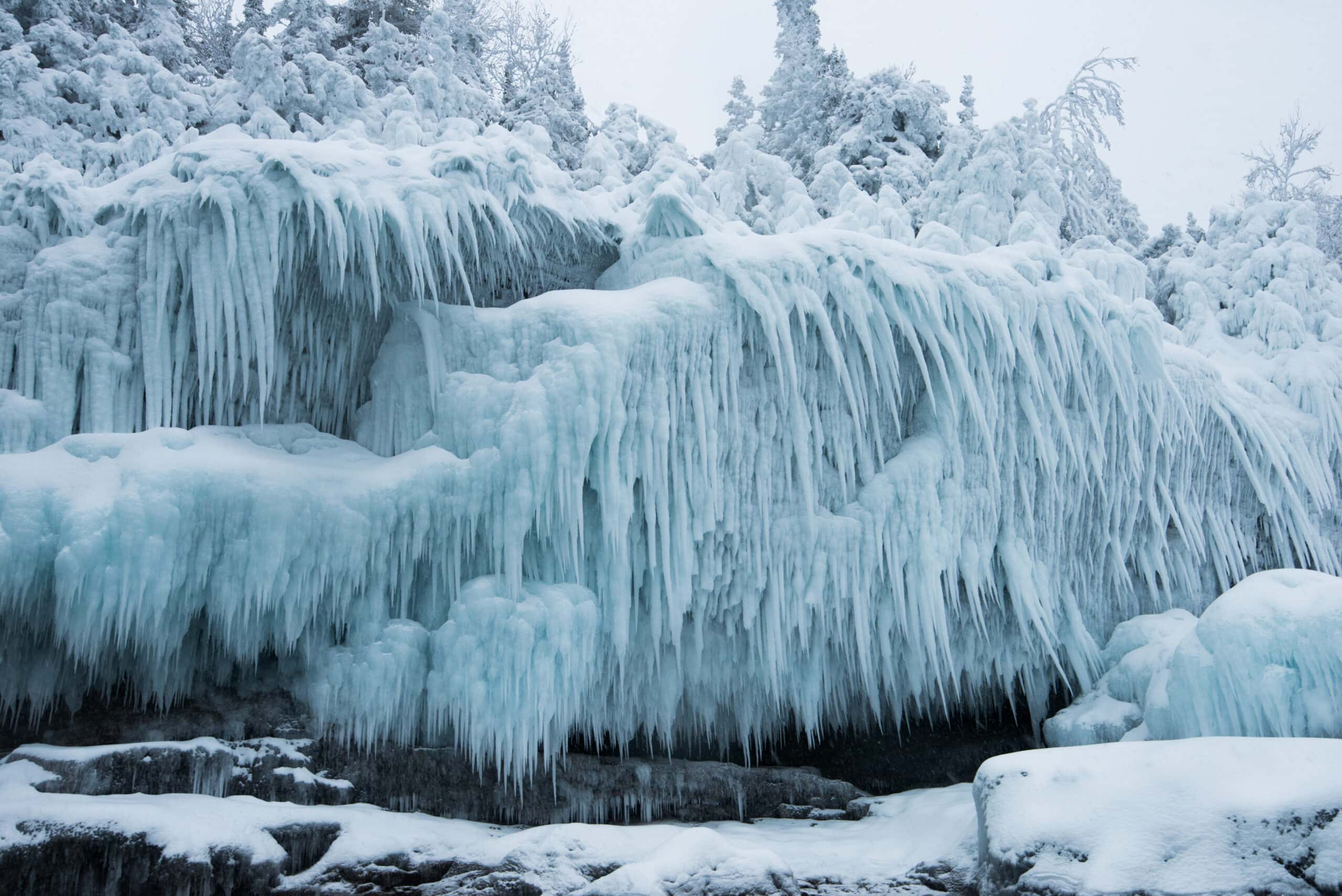
Wave-produced icicle formations Saugeen/Bruce Peninsula, Bruce Peninsula National Park, Lake Huron
These carrot-like formations take root along steep coastal environments where seasonal wave action stuccoes the escarpment with ice. Mild temperatures cause the early-season juvenile icicles to ooze downward while the harsh winds cause the formations to lean.
Snow is then able to rest on these icicles which congeals when the next round of wave action applies another fresh coat of ice.
Ice daggers may appear to be the roots of vegetation coated in ice, but they are actually made entirely of water and ice. As the ice daggers thicken, they protect the underlying vegetation from the constant walloping of winter waves.
5. Pancake ice

Saugeen Ojibway territory, Lake Huron.
Pancake ice is slightly more common than other ice formations on the Great Lakes and can occur all throughout the winter. Usually, it begins with a thin layer of grease ice — a thin, soupy layer of tiny frazil crystals, a millimetre or submillimetre in size — that accumulates and is agitated into circular disks by the constant surface motion of the water.
Each lily pad of ice forms ridges along their edges as they bump into each other, adding splashes of slush to their rims. Later in the season, thick ice can also fracture and be chewed into smaller pancakes that slowly dissolve.
Large swathes of pancake ice can interfere with navigation and present challenges for boaters and paddlers who find themselves cut off from their route by floating fields of impenetrable pancakes. So be cautious if you see these formations on a winter paddle.
Pancake ice can most commonly be found near the end of the winter season when the warming open water chews up the remnants of the remaining surface ice.
6. Ice rosettes
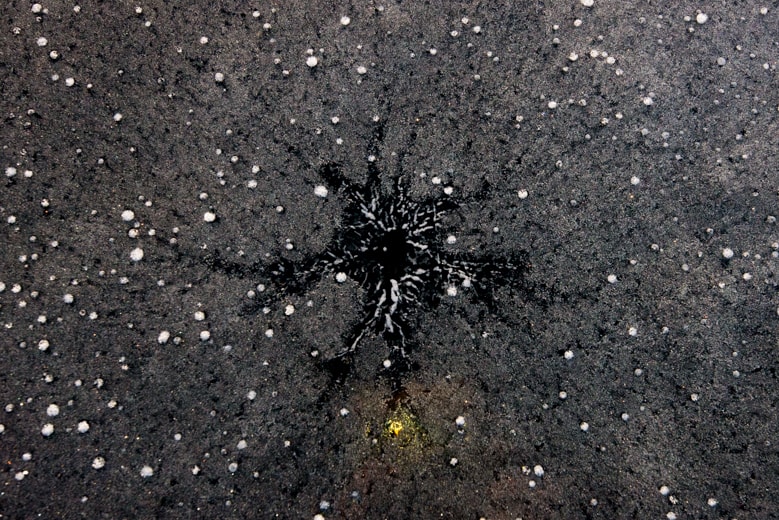
Fathom Five National Marine Park, Lake Huron.
Among the more cryptic lake ice formations, ice rosettes are also one of the most common yet poorly explained phenomena. They’re remnants of fractal-like holes with tendrils branching off.
Ice rosettes are loosely theorized to have been drainage holes where, perhaps, water on the surface of the surrounding ice seeped to this low spot and drained beneath the ice into the lake water. There are subtle vertical motions on the lake surface that cause low spots to rise and vice versa. As this happens, the water drains away from the hole and it eventually freezes shut.
Another speculation is that they mark the instance of thermal venting, releasing energy in the water column that melts through the surface from below as it rises. Once the thermal energy is expelled, the vents freeze over, leaving behind a site wound.
Others suggest small gas bubbles from the lake bottom could also play a role. The baffling origins of these puzzling patterns that can be found on any water that freezes is part of their strange and mysterious flare.
7. Ice volcanoes
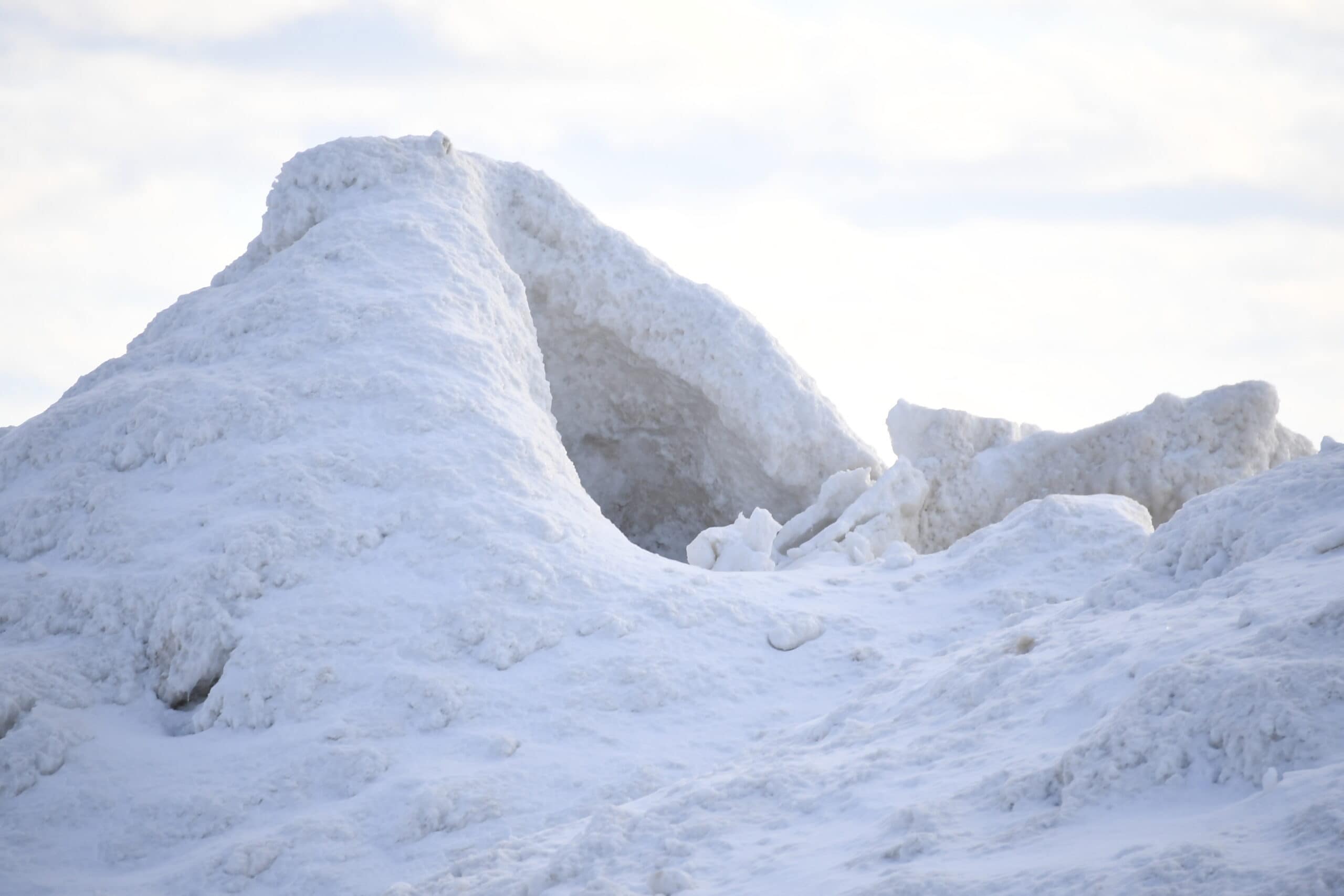
Sauble Beach, Lake Huron.
These conical mounds often form in series along the outer rim of an ice-jammed coastline. Similar to a stratovolcano, they have a vent that runs down through the centre and can erupt with a spray of water.
Ice volcanoes are genuine freshwater phenomenon. As salt water has a lower freezing temperature than freshwater, the growth of ice volcanoes is less common along ocean coastlines.
Ice volcanoes are hazardous because they appear like they are rooted onshore. However, these impressive mounds form on the outer rim of ice extending beyond the shore and over open water. Caverns of air lie beneath the ice surface which makes falling through the ice even more likely. Ice volcanoes are considered to play a role in helping protect sensitive shoreline environments, like native beach sand dune ecosystems from erosion by buffering the blows of wave action. Look for ice volcanoes when conditions on the lakes are warm enough for the water to be open, but cold enough to freeze the spray thrusting out of the cones to form their flanks.


